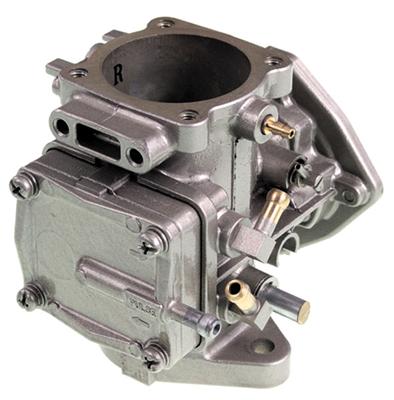 Nobody likes working on carburetors.
Nobody likes working on carburetors.
But getting ahead in life is about doing the things that most people don’t like doing, even when we’re talking about tinkering with your carbureted four-stroke dirt bike.
If your bike isn’t running the way you want or need it to, and you’ve identified the carb as the culprit, here are some dirt bike carburetor troubleshooting and service tips to help you get back to the dirt and out of the garage as quickly as possible.
Basic Carburetor Troubleshooting
Problem: Weak spark
What to do: Check your ignition coil with a multimeter. The deterioration of your ignition coil will cause your engine to run erratically and start missing at high rpm.
Problem: Clogged carburetor vent hoses
What to do: Make sure there is no mud or other debris in your vent tubes or hoses and that they’re not pinched between your suspension linkage. Vent tubes pinched shut or clogged will cause your jetting to seem lean and ultimately give you sluggish engine performance.
Problem: Carburetor float level too high or too low, causing rich or lean conditions
What to do: Adjust your float level. To do so, remove your carburetor and set it upside down on a flat surface. Pivot your float lever up, then slowly set it downward to the plunger tip of the inlet needle. Make sure your float lever or seam line is parallel to the float bowl gasket surface. Shake the floats to see if any fluid has seeped in. If so, you should replace them to avoid fuel flooding in your engine.
Inspect your fuel inlet needle to see if the rubber tip has been damaged. Also, check the plunger on the opposite end of the tip. If the plunger doesn’t extend all the way out, replace the spring.
Check your air screw to make sure the spring is securing it from vibrating outward and that your O-ring is sealing dirt and water out of the pilot circuit.
The next step is to check the mouth of your carburetor. Clear any passages clogged by dirt or air filter oil.
Once you’ve stripped down the carb, flush your passages with an aerosol can of carb cleaner or brake cleaner. Use the small-diameter plastic tube to direct the cleaner into each air passage. You should observe the cleaner flowing out the pilot jet and the air passage in the carb mouth. Then, spray through the pilot jet and watch for flow through the small passage between the intake spigot and the venturi.
Taking the time to do this will ensure your low-speed air and fuel circuits are open and giving you the flow your carb and engine required to function properly.
Be sure to also clean the slide and slide bore where it’s common to have dirt build-up and subsequent scratches that can cause your throttle to stick.
Problem: Worn carburetor fuel-inlet needle
What to do: You should be replacing your fuel-inlet needle and seat about every two years. When they wear out, too much fuel will enter the float bowl, travel up the pilot jet and into the engine, causing rich conditions.
Dirt bike carburetor rebuild kits can be found here.
We’re going to tackle carb jetting in our next powersports-related post, because there’s a lot to consider when fine tuning your dirt bike’s carburetion.

Did you ever figure this out? i am having the same or a similar problem….